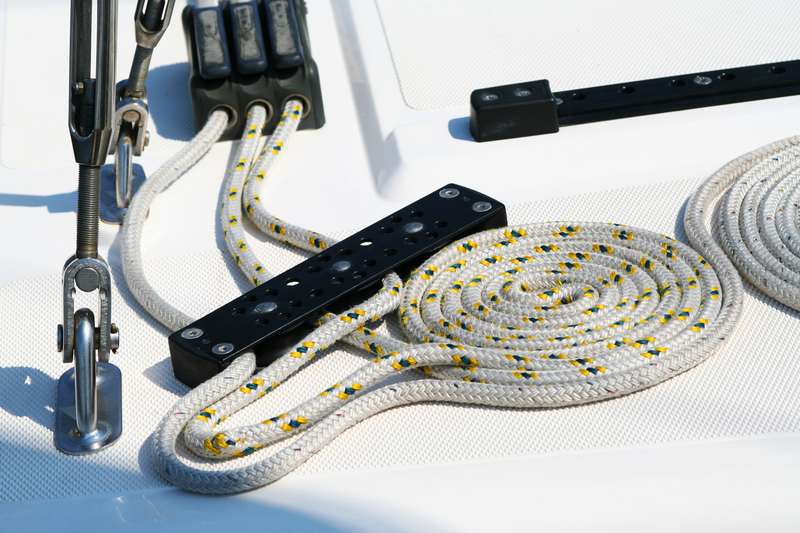Everything You Need to Know About Kinetic Lifting
Kinetic lifting is becoming an essential topic in both occupational safety and fitness circles. Whether you're a warehouse worker, an athlete, or just someone interested in moving objects safely, understanding the principles of kinetic lifting can make a significant difference in both performance and injury prevention. In this comprehensive, reader-friendly guide, you'll learn all about kinetic lifting: what it is, how it works, its benefits, techniques, equipment, and how you can incorporate these strategies into your daily life or workplace.
What is Kinetic Lifting?
At its core, kinetic lifting refers to the practice of using the body's mechanics to lift, move, and transport objects efficiently and safely. The word "kinetic" is derived from the Greek word for motion. In the context of kinetic lifting techniques, it means harnessing the energy from your body's movement to accomplish lifts while minimizing stress on your muscles and joints.
A Brief History of Kinetic Lifting
The concept isn't entirely new. Kinetic lifting principles have been used in various forms for centuries, especially in professions that involve manual labor. However, only in the past few decades has the practice been scientifically analyzed and included in ergonomics training programs and modern athletic routines.

Why is Kinetic Lifting Important?
Kinetic lifting is not just about moving things--it's about doing it right. The improper lifting of objects is a leading cause of lower back injuries, strains, and workplace accidents. By adopting proper kinetic lifting methods, individuals and organizations can:
- Reduce the risk of injury--especially to the back, knees, and shoulders
- Enhance efficiency and productivity by reducing work fatigue
- Promote long-term health for workers and athletes alike
- Comply with workplace safety regulations
In both fitness and labor settings, kinetic lifting techniques have proven crucial in promoting sustainable movement and preventing health problems.
The Science Behind Kinetic Lifting
The core science of kinetic lifting comes from biomechanics, physiology, and ergonomics. The idea is to align your body so that your bones, muscles, and joints work together most efficiently during a lift.
Biomechanical Principles
When you lift an object, kinetic energy is transferred from your muscles and skeletal system to the load. Proper energy transfer depends on:
- Posture - Maintaining a neutral spine and aligning your body with the load
- Center of gravity - Keeping the object close to your body reduces stress on your muscles
- Range of motion - Avoiding movements that place undesired strain on joints and muscles
- Force distribution - Using larger muscle groups (like legs and hips) instead of smaller, weaker ones
By using these principles, kinetic lifting methods help ensure you use the least possible energy and avoid common injuries.
Key Elements of Kinetic Lifting Techniques
1. Preparation
- Plan your lift: Assess object weight and path you'll take. Remove obstacles, and check for proper footing.
- Secure your grip: Ensure you have a firm, symmetrical hold on the object to avoid slips and sudden jerks.
2. Proper Body Positioning
- Stand close to the object--this reduces the lever arm length and decreases the strain on your back muscles.
- Feet shoulder-width apart--provides a solid, balanced base.
- Bend at the hips and knees--not the waist. Push your hips back while keeping your chest lifted.
- Keep your back straight--maintain a neutral spine throughout the movement.
3. The Lift
- Engage your core muscles--this stabilizes your torso.
- Lift with your legs--push through your heels, straightening your knees and hips at the same time.
- Avoid twisting--if you need to turn, move your feet instead of rotating your torso.
4. Lowering the Object
- Reverse the process: Lower the load by bending your knees and hips, not your back.
- Set down carefully: Make sure your toes aren't under the object, and release your grip only after the object is securely placed.
Each of these steps is integral to effective kinetic energy lifting and prevents injury while maximizing efficiency.
Common Mistakes in Kinetic Lifting
Even with proper knowledge, people often make mistakes when applying kinetic lifting techniques. Here are the most common pitfalls:
- Rounding the back during the lift
- Lifting too quickly, with jerky movements
- Using only the arms or back muscles instead of the legs and hips
- Carrying loads that are too heavy without assistance or mechanical aid
- Turning or twisting while holding a heavy load
- Neglecting to warm up before performing repeated or heavy lifts
Avoiding these mistakes is essential to harnessing the full benefits of kinetic energy lifting mechanics.
Benefits of Kinetic Lifting
Workplace Safety
In industries such as logistics, construction, and healthcare, kinetic handling and lifting are more than buzzwords--they are standards embedded in safety protocols. Workers trained in proper kinetic lifting:
- Experience fewer injuries
- Recover faster from physical strain
- Boost overall productivity
Exercise and Strength Training
In the gym, understanding the kinetic chain in lifting can enhance your performance while decreasing the risk of injury. Athletes who master this approach tend to have better posture, core strength, and functional movement patterns.
Long-Term Health and Mobility
By using kinetic lifting techniques in everyday life--whether moving boxes or picking up children--you protect your spine and joints, fostering long-term health and mobility.
Kinetic Lifting Equipment and Tools
In addition to manual technique, various tools and equipment can aid in safe, kinetic-based lifting:
- Lifting belts--support the lumbar spine, but should not replace proper technique
- Hand trucks and dollies--best for transporting very heavy objects
- Mechanical lifters and hoists--ideal for extremely heavy or awkward loads
- Ergonomic gloves--improve grip and reduce hand fatigue
- Anti-slip footwear--provides stability during lifts
When used correctly, these tools complement good kinetic lifting practices and further mitigate risk.
Kinetic Lifting in Different Contexts
Warehouse and Industrial Environments
In warehouses, kinetic lifting techniques are applied extensively. Team members receive dedicated training on kinetic lifting, including instructional videos and posters. Managers may carry out regular compliance checks to reinforce the correct techniques.
- Team lifting--for objects that exceed safe single-person weight limits
- Rotation of tasks--to reduce repetitive strain
Healthcare
Nurses and caregivers often need to move patients or heavy equipment. Proper kinetic energy lifting training minimizes injury, not just for the caregiver but also for the patient.
Home and Personal Applications
From moving furniture to picking up groceries, using kinetic principles for lifting in everyday tasks ensures your body stays healthy and functional throughout life.
How to Promote Kinetic Lifting Practices in the Workplace
- Offer kinetic lifting training for all new hires and as part of ongoing safety programs
- Use visual reminders--like posters and infographics in work areas
- Supervise and correct technique regularly
- Encourage use of proper lifting equipment
- Reward safe lifting behaviors
Organizations investing in kinetic energy lifting safety benefit from fewer accidents, lower insurance premiums, and happier, healthier staff.
Exercises to Improve Kinetic Lifting Efficiency
To get the most out of kinetic lifting techniques, it is beneficial to strengthen key muscle groups and enhance flexibility. Here are some excellent exercises:
- Squats--strengthen your legs, hips, and core
- Deadlifts--simulate the movement of lifting heavy objects from the ground
- Planks--build core stability for better load management
- Farmer's walks--improve grip and functional strength
- Hip hinges--train proper movement patterns for lifting
Mobility and Flexibility Drills
- Hamstring stretches
- Hip openers
- Dynamic warm-ups such as arm swings and leg circles

FAQs About Kinetic Lifting
What's the difference between kinetic lifting and regular lifting?
Kinetic lifting is a structured approach to lifting that focuses on using the entire body in a coordinated, safe manner, utilizing the principles of body mechanics and kinetic energy transfer. Regular lifting may not always take these guidelines into account, often resulting in inefficient and dangerous techniques.
Is kinetic lifting relevant only in professional settings?
Absolutely not! While it is crucial in industries and fitness, everyone can benefit from applying kinetic lifting basics in daily routines at home, during recreational activities, or when participating in sports.
How can I tell if I'm using proper kinetic lifting?
Signs of correct technique include a stable, upright posture, no sudden or jerky movements, and absence of pain during or after the lift. If in doubt, consider professional training or consulting a physiotherapist.
Conclusion: Make Kinetic Lifting Part of Your Routine
Kinetic lifting isn't just for professionals or athletes; it's a foundational skill that enhances safety, prevents injuries, and strengthens your body. By understanding the science, principles, and practical techniques of kinetic lifting, you empower yourself to move objects--and your own body--effectively and sustainably.
If you're new to kinetic energy lifting methods, start by incorporating the basics during your daily tasks and workouts. Seek out professional instruction or guidance if you're dealing with heavy or awkward loads regularly. Remember, good technique is always worth the effort!
Whether at work, in the gym, or at home, embracing the key elements of kinetic lifting is a smart investment in your health, wellbeing, and long-term mobility.
```


